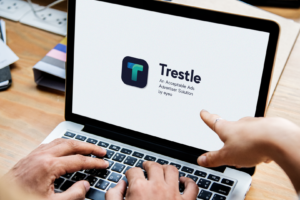We live in a world today where we’re surrounded by many different types of advertisements. Most users are aware of the role advertising plays in keeping the internet open, but that doesn’t mean we all agree with the methods advertisers use to capture our attention.
So here’s the thing: just because we’re accustomed to seeing ads everywhere, especially online and on social media, doesn’t necessarily mean we’re all ‘banner blind.’ We didn’t all just grow comfortably accustomed to it.
The reality is that users today are actually more ‘ad aware’, meaning we’re acknowledging that while there are many intrusive ads, not all of them should be blocked indiscriminately. The sentiment we’ve received from Acceptable Ads ad-filtering users (ad-blocking users who consent to see some ads) is that it’s ok if a small amount of nonintrusive ads are allowed through, as long as they’re respectful and don’t compromise the user experience.
A year in the pandemic has resulted in a change in consumer habits and an increase in ad-blocking rates by 25M users on desktop and 21M users on mobile, reaching a total of 843M users. As users play a huge role in the success of advertising––and advertisers and marketers are beginning to realize that more than ever––we’ve pulled together some stats from GlobalWebIndex (GWI) to shed some light on user thoughts about four different ad types.
1. Social Media
Social media advertising is growing in popularity, and there’s a good reason for it: the users. There are nearly 1 billion global active users on Instagram, 2.5 billion on Facebook and 330 million on Twitter every month. These users typically spend an average of 144 minutes on social media daily.
As advertising spend in social media is at a record high and is expected to exceed $8.5 billion in 2021, let’s loop the users in. Here’s what they think about social media ads:
- Excessive: 31%
- Intrusive: 27%
- Distracting: 26%
- Relevant: 12%
- Helpful: 13%
While brands are paying for large ad campaigns, most online users fall within the younger demographic, and they’re easily distracted online. Only a small percentage of young users would actually give the ad the attention or clicks needed to drive a purchase.
And although 2020 saw a rise in social media usage, trust remains low. Users are expecting reliability (57.6%), authenticity (45.9%) and innovation (47.8%) from brands. Only 26.5% of users use social media to find products to purchase, and 45% would unfollow a brand due to irrelevant content and excessive ads.
For brands to truly succeed and gain a higher return on their ad spending, they have to rebuild the user’s trust, starting by understanding what users want and delivering it.
2. Traditional TV and Connected TV (CTV)
Television ads are still one of the most favored and effective modes of advertising around the world. What’s truly interesting to note is that despite the rise in digital TV during COVID-19, broadcast TV is still more popular than its online substitutes. According to GWI, TV ads are less likely to be expressed as ‘intrusive’ or ‘excessive.’ Users describe ads they see on television as entertaining (34%), informative (30%), helpful (15%), and relevant (13%).
However, as TV watchers are typically multitasking, switching channels, or fast-forwarding ads, 55% of ad time on TV is not usually given any attention.
3. Email
Email advertising can be seen as excessive (32%), seeing that brands use automation and opt-in tactics to bombard users with updates. However, users generally find email ads informative (31%), helpful (20%), and relevant (17%). About 60% of consumers subscribe to a brand to get promotional deals, compared to only 20% who follow brands on social channels. Email is an approach that’s valued by many and they’re perfect for any demographic, especially the older consumers who want to be in the loop.
Furthermore, when it comes to emails, users have the upper hand in deciding what stays in their inbox and when to hit unsubscribe. Advertisers use these statistics to provide relevance to the users, which is a bonus that they enjoy.
4. Websites
Consumer opinion on website ads is generally negative. 30% find website ads distracting, 32% excessive, 28% intrusive, and only 23% informative. This doesn’t come as a surprise to many, especially not to us here at Acceptable Ads, seeing that there was a rise in ad-filtering users in the last year.
Users feel that ads are invading their privacy and they interrupt any form of positive browsing experience, which is a result of marketing strategies that involve the use of interruptive and attention-grabbing advertisements. According to HubSpot, 68% of marketers in 2020 say that paid advertising is very or extremely important to their marketing strategy. Ad placement and audience targeting are the “top optimization tactics used by advertisers today.”
As a result, 44% of respondents have resorted to downloading ad blockers to avoid being tracked online.
The truth is: ad blocking is costing advertisers billions of dollars globally and these numbers will keep increasing. Users have spoken up about their distaste for online ads that ruin their browsing experience and have demanded for more transparency and less invasiveness. It’s up to brands to listen now.
User feelings towards ads are paramount
Our knowledge from over 200 million ad-filtering users is that they don’t hate all ads (90%). Over 83% of Acceptable Ads users approve of seeing some form of ads, as long as they are respectful and nonintrusive. They’re also 76% more likely to post a review or comment about brands and services. These are promising numbers.
Ultimately, the effectiveness of online ads is evolving with consumer demands and expectations, and it will continue, especially after the rapid digitization caused by COVID-19. The way consumers feel and respond to different types of advertising is essential in shaping the outcome of the ads, and it’s clear that brands must adhere to that early on to gain success.
To learn more about the future of online advertising and the role ad-aware users play in it, click here.


